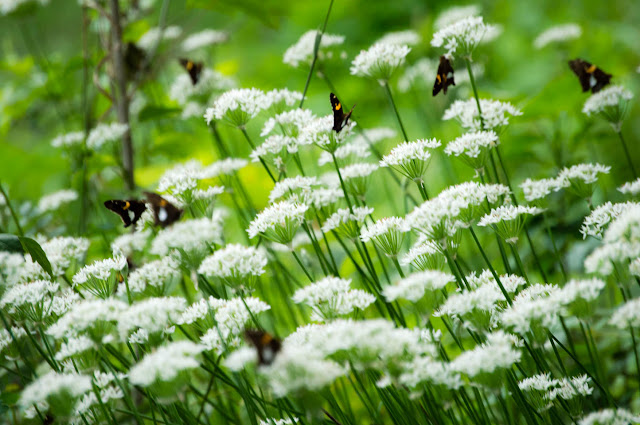More About Invasive Plants
I read a blog post once that listed different things the author thought made good vs. bad blog posts (particularly in terms of increasing your readership). One of the "bad" things was to simply link to other web-pages, instead of writing your own content. Her rational was that this just sends people away from your blog.
Though I am not concerned with having a thousand people read my blog, for some reason this idea really resonated with me. But today, I am going against it. There is a lot of good information about invasive plant species on the web and I am just going to point you to it today. Why reinvent the wheel? Especially as I have three exams to write. The site I am linking to is the Global Invasive Species Database. They have good summary information about each species, including pictures and links to further information.
Today I focus on two plant species that are problems in the grasslands on the western United States.
Chinese Lespedeza (Lespedeza cuneata) - This plant is particularly bad because it can invade into pristine prairies. It also becomes a problem in rangelands. This plant can form mono-specific stands (i.e. it is the only plant species present), crowding out either native plants, or plants that cattle prefer to eat. As with many invasive species, it was intentionally brought to the US. In this case, as either erosion control (of which it does a good job) or as a forage plant (which it is less good at because through time the branches can become tough and unpalatable). Last I checked, it was still used in the Southeastern US for forage.
Leafy Spurge (Euphorbia esula) - another species that is a problem on rangelands. This species can be toxic to sheep, cattle, and horses. It is from Europe. It is considered to be one of the worst 100 invasive species.
Though I am not concerned with having a thousand people read my blog, for some reason this idea really resonated with me. But today, I am going against it. There is a lot of good information about invasive plant species on the web and I am just going to point you to it today. Why reinvent the wheel? Especially as I have three exams to write. The site I am linking to is the Global Invasive Species Database. They have good summary information about each species, including pictures and links to further information.
Today I focus on two plant species that are problems in the grasslands on the western United States.
Chinese Lespedeza (Lespedeza cuneata) - This plant is particularly bad because it can invade into pristine prairies. It also becomes a problem in rangelands. This plant can form mono-specific stands (i.e. it is the only plant species present), crowding out either native plants, or plants that cattle prefer to eat. As with many invasive species, it was intentionally brought to the US. In this case, as either erosion control (of which it does a good job) or as a forage plant (which it is less good at because through time the branches can become tough and unpalatable). Last I checked, it was still used in the Southeastern US for forage.
Leafy Spurge (Euphorbia esula) - another species that is a problem on rangelands. This species can be toxic to sheep, cattle, and horses. It is from Europe. It is considered to be one of the worst 100 invasive species.


Good posts.
ReplyDeleteAre you going to do the Centaurea gang eventually? They're up there on my list of "baddies."
As is garlic mustard, which is not so much present (may not even be present) where I am now, but was a major problem in forests in Illinois.
I am currently working on research examining invasive plants from a number of different countries - New Zealand, South Africa, Brazil, the U.S., and others. There are a few species that crop up in more than one country.
There are also lots of bad waterway-invaders, like Eichhornia crassipes.
Jenninfer - thanks for commenting on my blog - I saw on my hits that you'd visited and I checked you out and, needless to say, I'll be back again and again. Your hats on Flickr are gorgeous - I've yet to work up the courage for any Fair Isle . . . yet!
ReplyDelete